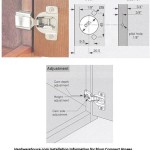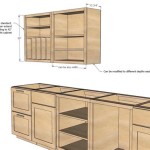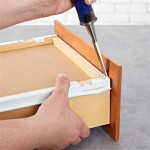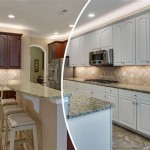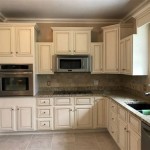Reskinning Kitchen Cabinets: A Comprehensive Guide
Reskinning kitchen cabinets is a cost-effective and efficient way to breathe new life into your kitchen without the hassle and expense of a full remodel. This technique involves replacing the cabinet doors and drawer fronts with new ones, while preserving the existing cabinet boxes. Here's a comprehensive guide to understanding the process, benefits, and key considerations.
Benefits of Reskinning Kitchen Cabinets
Cost-Effective: Reskinning is significantly cheaper than replacing the entire kitchen cabinet system, saving you thousands of dollars.
Time-Saving: The process is less time-consuming than a full remodel, allowing you to enjoy your new kitchen sooner.
Increased Value: A fresh look can increase the value of your home and make it more appealing to potential buyers.
Customization: You're not limited to the design of the existing cabinets. Reskinning offers the opportunity to customize your kitchen with a wide range of styles, colors, and materials.
Types of Reskinning Options
Wood Veneers: Real wood veneers offer a natural and sophisticated look, available in various species and finishes.
Laminates: Laminates are durable and affordable, coming in a wide selection of colors, patterns, and textures.
Thermofoil: Thermofoil is a vinyl-like material that provides a seamless, high-gloss finish.
Acrylic: Acrylic sheets create a modern and glossy look with excellent durability.
Considerations for Reskinning Kitchen Cabinets
Cabinet Construction: Ensure your cabinet frames are in good condition. Reskinning is recommended for well-built cabinets with no structural issues.
Door Profile: Match the new doors to the original door profile to maintain the overall aesthetic of your kitchen.
Hardware: Replace the hardware to complement the new doors and knobs.
Professional Installation: While reskinning can be a DIY project, it's best to hire a professional for precise alignment and a lasting finish.
Process of Reskinning Kitchen Cabinets
1. Remove Existing Doors and Drawers: Carefully remove the old doors and drawers to avoid damaging them.
2. Clean Surfaces: Clean the cabinet frames and remove any dust or debris.
3. Install New Doors and Drawers: Align and attach the new doors and drawers using screws or hinges.
4. Replace Hardware: Install new knobs, handles, or pulls to update the look and functionality.
5. Touch Up: Repair any gaps or nicks around the edges using caulk or wood filler for a seamless finish.
Conclusion
Reskinning kitchen cabinets is a versatile and budget-friendly solution to transform the look of your kitchen. By carefully considering the options, hiring a professional if necessary, and following the steps outlined in this guide, you can achieve a stunning kitchen update that will enhance the style and functionality of your home.

Cabinet Refacing Process And Cost Compared To Painting

How To Resurface Kitchen Cabinets 2024 Guide Forbes Home

Our Refacing Process Kitchen Magic

Cabinet Refacing Vs Painting Which Is Right For You

How Do I Prepare My Kitchen For A Cabinet Refacing Project

Kitchen Cabinet Refacing Options And Tips

How Does Kitchen Cabinet Refacing Work

Kitchen Cabinet Refacing Makeover A Homeowner S Experience

Kitchen Cabinet Refacing Review Why We Chose It For Our Home Kaitlin Madden

Average Cost To Reface Cabinets By Li Foot Material And Type Forbes Home
Related Posts


